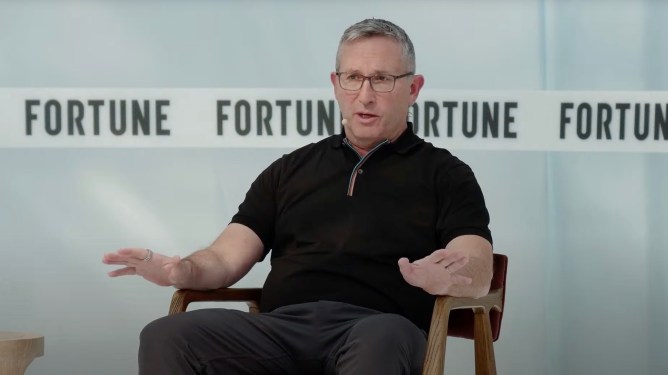Oura CEO Tom Hale is attempting to set the record straight regarding the smart ring company’s work with the Department of Defense and the data firm Palantir. At the Fortune Brainstorm Tech conference, Hale began his interview by outright denying that Oura shares user data with the government. He stated that a great deal of misinformation had spread, leading to a viral backlash against the health tracker.
Hale had previously addressed the misleading reports online, assuring users that the company does not sell their data to third parties without explicit consent. He explained that the DoD program Oura is involved in requires the company to run its enterprise solution in a separate, secure environment. He confirmed that the government does not have access to users’ personal Oura health data.
He reiterated these points clearly, saying Oura will never share or sell user data to anyone unless the user directs them to do so. Hale expressed that reports of a partnership to share user data were simply not true and that he was thankful the initial outrage had begun to subside.
Hale also clarified the company’s relationship with Palantir, noting that calling it a “partnership” was an overstatement. He explained that Oura had acquired a company last year that had a pre-existing software-as-a-service business contract with Palantir. This relationship was for a DoD certification standard known as Impact Level 5, which deals with handling sensitive but unclassified data.
He emphasized that this is a small commercial relationship, the systems are not connected, and there is no way for Palantir or anyone in the government to access user Oura data, calling the reports totally overblown.
Hale added that user privacy and data security are paramount to Oura. The company’s terms of service state it will oppose any efforts to use user data for surveillance or prosecution. Even when users authorize Oura to examine their data for support, the employee reviewing it has a limited role and can only see what was specifically authorized.
Looking to the future, Hale observed the market is shifting toward smaller, cheaper wrist-worn wearables in regions like Asia and India, while the ring wearable category has doubled in size. He noted Oura is growing over 100% annually.
The company aims to become a “preventionist” health device that alerts users to potential health issues before they become serious problems. This is aided by the ring’s design to provide insights into evolving health metrics, machine intelligence, and a dedicated health advisor.
Oura does see itself working with the government in different ways, such as its partnership with Medicare Advantage to provide rings to eligible patients. Hale also hinted at a future with multiple wearables, suggesting that no single ring will rule them all. He believes we will see a cloud of wearables, with the choice of device being relevant to the specific clinical use.

